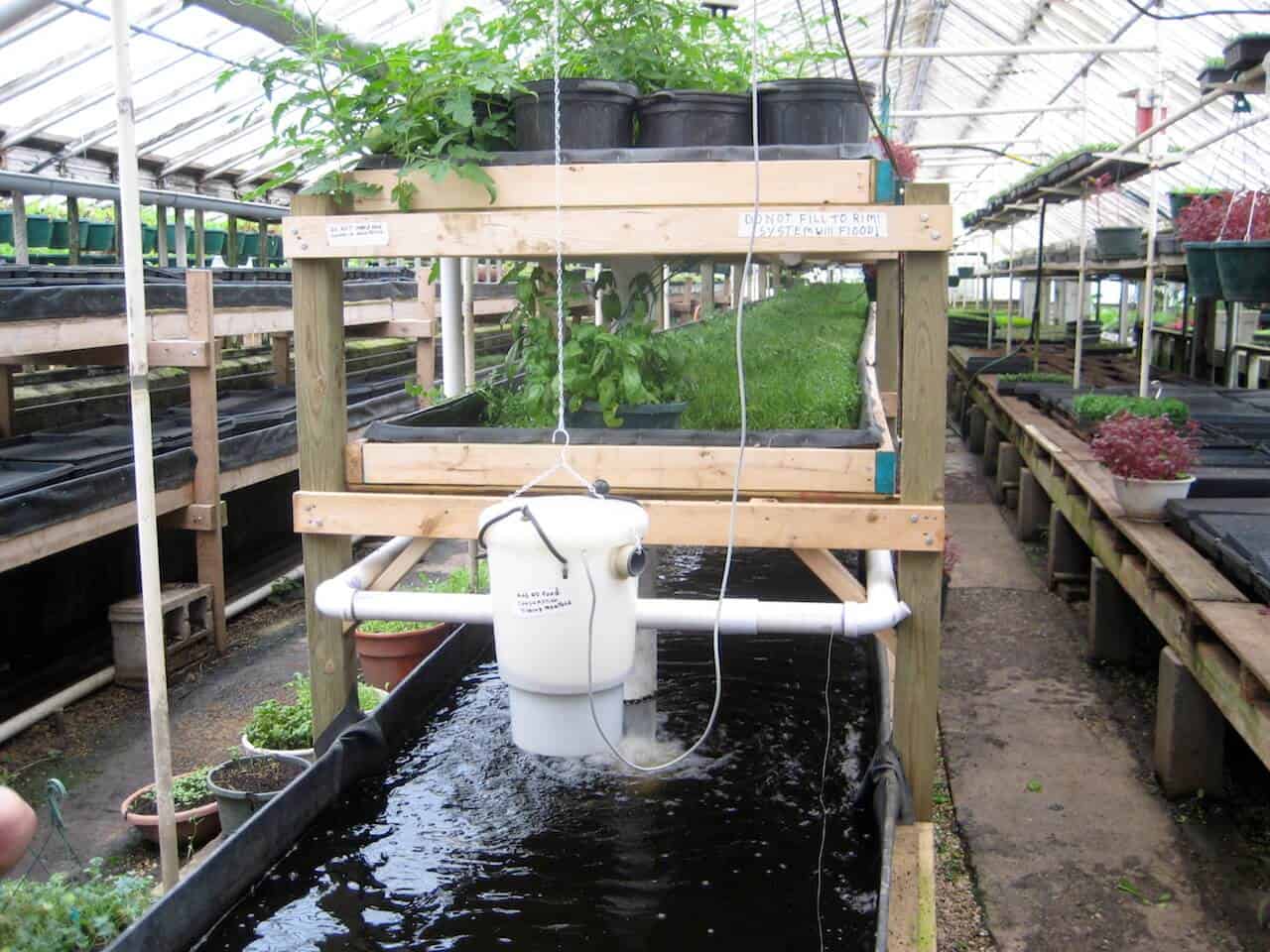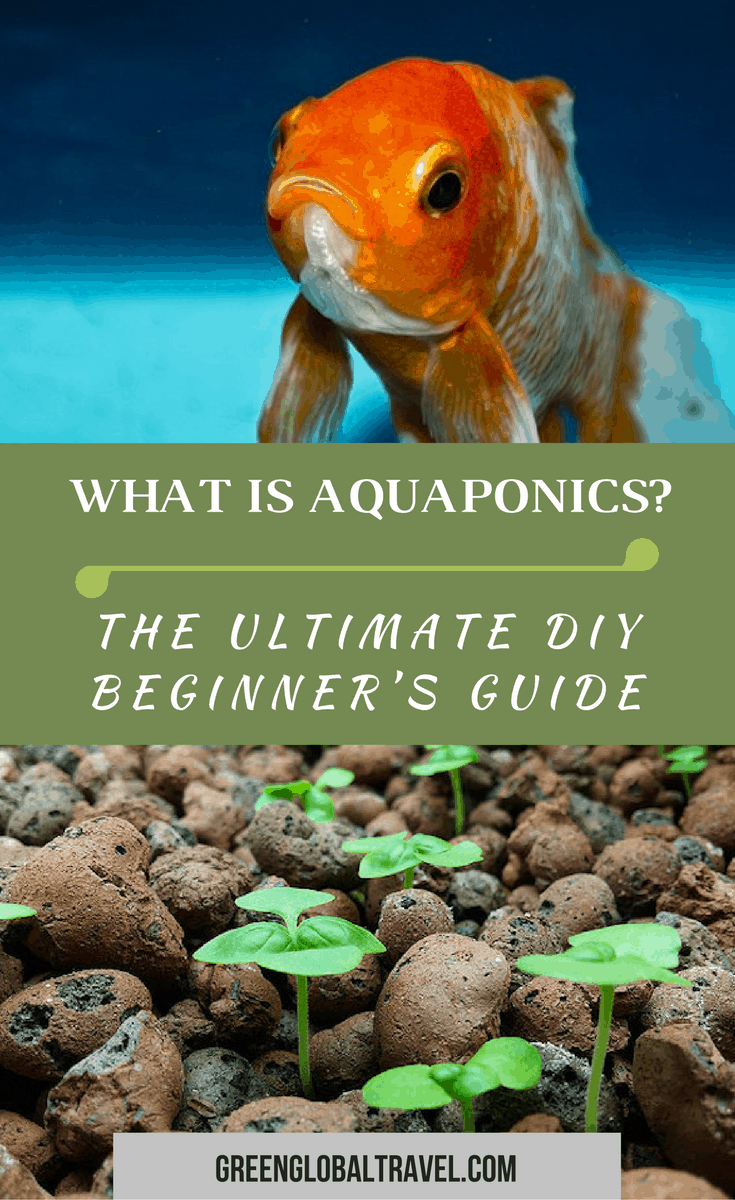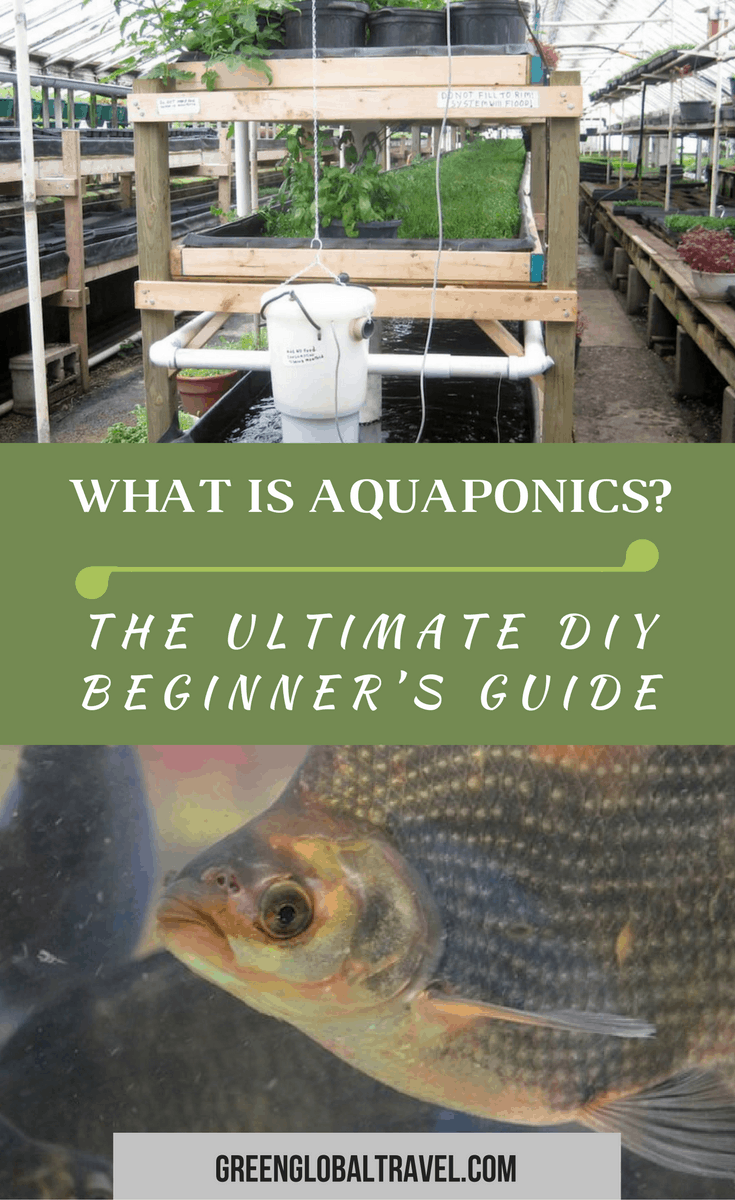What is aquaponics? In recent years it has proven to be one of the most rapidly growing trends among those who want to grow the food we consume more sustainably.
To state the obvious, aquaponics centers around water. The ten-cent aquaponics meaning is that fish are raised in the water, and plants are then grown using the nutrients (fishy toilet business) from that water. As they feed, the plants are filtering and cleaning the water so that it can be cycled back to the animals, and the fish can continue living in it.
The sustainability movement has promoted this as an exciting new means of food production. Aquaponics requires significantly less water than current agricultural systems. It also doesn’t deplete soil nutrients, pollute the planet, or cause deforestation.
This revolutionary approach to aquaponics gardening is especially useful in urban areas, where the majority of the world’s population lives. This is because it tends to produce a higher food yield in minimal space than traditional gardening, with no soil needed and little to no waste.
Since it offers food production possibilities within cities, this equates to a huge reduction in the miles our food must travel to reach our grocery stores and farmers markets. Some experts have even suggested that aquaponics can be part of the solution for our future means to feed the billions of people across the planet.
The best news is that just about anyone can do it. Small home aquarium aquaponics designs can be set up in a tiny apartment. Relatively large scale aquaponics systems already exist to act as models for interested at-home growers. In other words, the blueprints are out there for us all to learn from. And we’re here to help you learn the basics of how to aquaponics.
READ MORE: What Is Permaculture Gardening?
- Definition of Aquaponics
- A Brief History of Aquaponics
- DIY Aquaponics System Design
- Best Fish for Aquaponics
- Best Plants for Aquaponics
- Challenges with Aquaponics
- Aquaponics for the Future
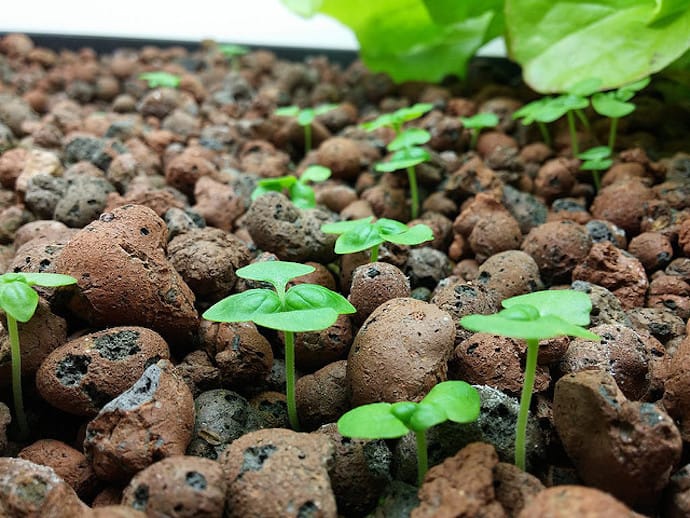
DEFINITION OF AQUAPONICS
Aquaponics definition is a system of aquaculture in which the waste produced by farmed fish (or other aquatic animals) supplies nutrients for plants that are grown hydroponically, which in turn purify the water. This makes aquaponics an inexpensive, eco-friendly way of efficiently producing a lot of food in a small amount of space, especially in metropolitan environments.
The word aquaponics comes from the melding of two slightly more familiar terms: aquaculture and hydroponics. Aquaculture is often defined as fish or shellfish farming, while hydroponics refers to growing plants in a water solvent (i.e. without soil). Aquaponics combines these two ideas together.
Aquaculture can often be problematic because it produces a lot of polluted water and disease due to excess fish excretions, which have nowhere to go. Hydroponics usually relies on chemical inputs for the nutrition needed to grow plants without soil. Cleverly, aquaponics takes the fish poop and uses it to feed the plants, and the plants clean the water.
By blending natural nutrient cycling and food cultivation, aquaponics can produce tons of food in a small fraction of the area used by monoculture farms. Impressively, it does so without creating the myriad pollution and disease problems that often come from feedlots.
Even large-scale versions of well-designed aquaponics systems typically require just one small pump in order to keep the water cycling from fish tank to growing bed. Even a basic solar-powered pump will suffice. From the growing beds, the filtered water is fed back down to the fish tank using gravity. In other words, these symbiotic systems require very little energy.
In aquaponic systems, fish are farmed to provide food. Plants are grown from the waste of fish to produce more food and help clean the water. Unlike in land-based agricultural systems, this water can then be reused. So the system also requires much less water overall. Many believe this type of eco-friendly system is what the future of food is going to have to look like.
READ MORE: Going Green: 60 Simple Tips for Earth Day & Every Day
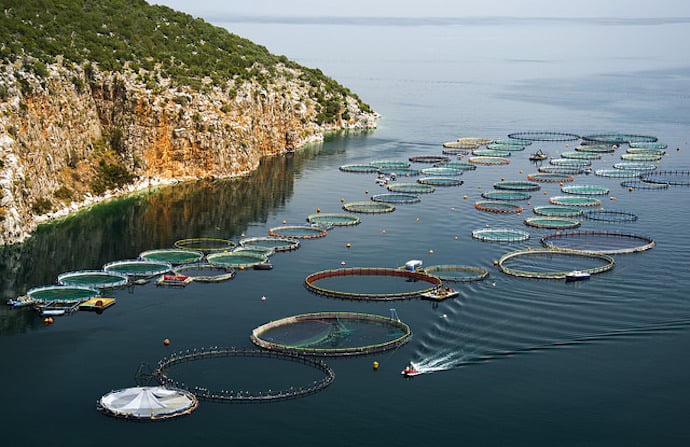
A BRIEF HISTORY OF AQUAPONICS
Despite its trendiness and all the new-fangled technology involved, aquaponics is not a new system of food production. It’s actually an ancient methodology that was used in both the Americas and Eurasia.
The ancient Aztecs of Mexico had extensive chinampa systems that utilized water-based techniques. These systems were built on swampy ground by digging deep canals and using the dredges to create raised planting platforms. Fish were raised in the canals, and the crops growing on the raised platforms took advantage of the nutrients below.
Similar techniques have also been used in the rice paddies of China for centuries. Rice and other aquatic plants are cultivated in and around rice paddies, and fish are raised in the water to provide a rich source of protein as well as plant nutrients. This same method is now being adopted and adapted by permaculturists and sustainable growers across the world.
The modern aquaponics movement began in the late 1970s. The rise of its popularity in American is typically accredited to The New Alchemy Institute and efforts made at North Carolina State University.
Modern aquaponics systems are generally based around simple tanks and grow beds. The newer methodology makes the agricultural approach more conducive for urban production. This is why pundits predict aquaponics will be vital to our food systems later in the 21st century, when petroleum runs out and climate change becomes a harsh environmental reality.
The most important point to realize is that aquaponics not some new, unproven concept. Chinampas are often recognized as the most productive form of food cultivation that has ever existed, and the rice paddy system has existed for nearly 10,000 years. In other words, the value and sustainability of aquaponics had been established long before any of us were born.
READ MORE: Are GMO Crops the Future of Food?
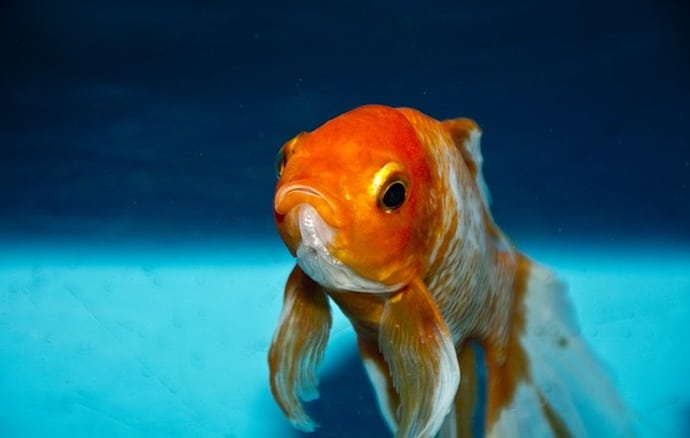
DIY AQUAPONIC SYSTEM DESIGNS
There are lots of different ways to create aquaponics DIY systems at home. But the crux of all of them is that the dirty water from fish tanks or ponds is pumped through plant-growing beds, then guided back into the water. This can all be done in the space of standard-sized aquariums, but there are larger barrel and pond systems that will work well outside, or in greenhouses.
In whichever aquaponics system diy setup you use, there will need to be a place for the fish to live, a pump to move the water, a watertight bed for the plants to grow in, and a soil-free medium in which those plants can stabilize.
The pump doesn’t need to be huge, but its size will vary by how far the water must go up. The container for the plants can be anything from a length of pipe to a standard window box or a huge barrel. And generally the plants are either grown in gravel or special clay pellets.
For those not into freewheeling do it yourself projects, there are plenty of aquaponics kits available for purchase. These kits tend to be smaller than other home systems, and of course they really do simplify the setup process. But, for those who don’t mind getting their hands dirty, aquaponics is famously fun for more adventurous growers.
DIY versions of aquarium aquaponics are generally comprised of a container that fits atop an aquarium of similar length and width. Two holes are drilled into the container– an inlet near the top of one side and an outlet in the bottom. This allows a pump in the aquarium to send water up to the inlet, after which the filtered water will drain back into the tank through the outlet. The plants will either need to be near a window for direct sun or have a grow light.
You can also build larger systems, in which the fish can be raised for food and not just pets. YouTube is a great source for finding lots of designs that use repurposed, large food-grade containers. Essentially, the fish grow in one container while the other is used as a grow bed. Then the water flow is arranged just as it is for the smaller aquarium systems.
READ MORE: 15 Ways To Reduce Waste And Move Towards Waste-Free Living
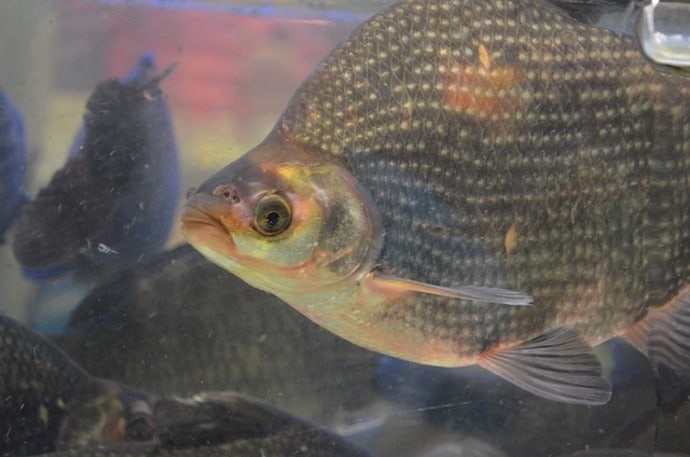
BEST FISH FOR AQUAPONICS
Fish are crucial to aquaponics systems because they provide the nutrients for the plants. For high-production systems, they also equate to food for people. That being said, not all fish species are suitable for use in aquaponics. And not all fish suitable for aquaponics are appropriate for every geographical region.
The first rule when it comes to choosing fish for an aquaponics system is considering the temperature of the water. Tropical fish are going to do best in water roughly 80 degrees Fahrenheit, but they’re able to survive down to about 72 degrees. On the other hand, cold water fish won’t function well in waters that warm. So the fish needs to fit the climate.
For small-scale indoor growers who are using aquariums to learn the ropes and produce a few veggies, whatever fish that are currently working in the aquarium are fine. In this case, it’s only their excrement that is of interest, because the fish aren’t going to be your dinner. Common breeds such as Goldfish and Koi are well-suited for aquaponics systems.
When it comes to protein production in warm weather, certain fish will do better than others. The most frequently suggested (and familiar) species for warm climates is Tilapia. Barramundi are another species that does well in warm weather, as are Jade Perch (which are good for Omega-3) and Channel Catfish.
In colder environs, you’ll want to stock completely different fish. The best cooler aquaponic fish are Trout, Carp, and White Bass. All of these fish do best in water that never goes above 70 degrees Fahrenheit.
READ MORE: Invasive Species List: 10 Destructive Species You Can Eat

BEST PLANTS FOR AQUAPONICS
In general, the best plants for aquaponics systems are those that are rather thirsty and grow above the surface. In other words, this is not the best method for growing your potatoes and carrots. However, when it comes to growing fresh salad ingredients, aquaponics is awesome.
Of course, temperature is going to have some effect on the plants that will grow well. Many common garden plants— such as tomatoes, eggplants, and peppers— are tropical in origin and will not tolerate the cold. In contrast, lettuces and cabbages (the cruciferous family) will wilt in the heat. So here again, it’s best to choose plants that suit the climate in your area.
The typical aquaponics garden is going to have an abundance of leafy greens, which tend to like a lot of water and nitrogen. Bok choy (of the mustard family) and chard are highly regarded for their broad temperature range and grow well in water. Loose-leaf lettuces (such as romaine or butterhead), chard, and kale are good for cooler spots.
Several herbs are nicely suited for aquaponics gardening. Basil enjoys heat and sun. Chives are a little slow, but productive and resilient. Mint is thirsty and has a reputation for growing prolifically enough to readily take over beds. Parsley is a great cool weather option.
In terms of fruiting crops, strawberries are an easy option for beginners. More popular hydroponic crops, such as tomatoes and cucumbers, tend to be overly demanding of nutrients. They might require some experience with easier veggies prior to attempting them.
READ MORE: Permaculture Design: 12 Steps to a more Productive Garden
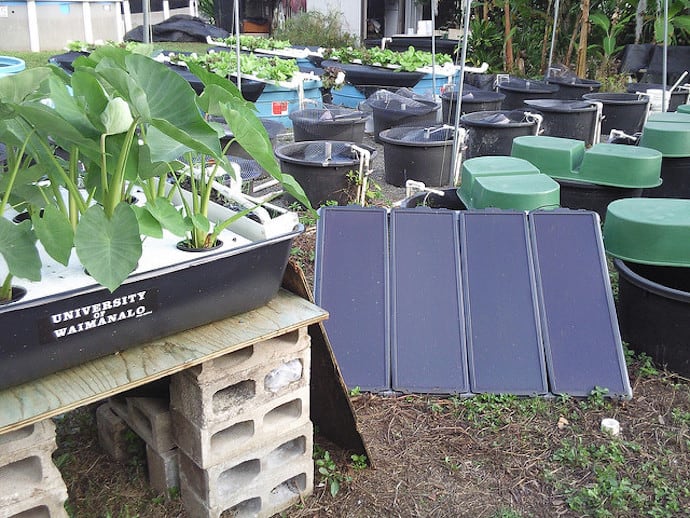
CHALLENGES & DISADVANTAGES OF AQUAPONICS
Despite the rosy disposition you’ll find in most articles on the subject, this is not a venture without challenges. Beginner Aquaponics systems require patience and persistence. Smaller aquarium versions don’t require much investment, but systems that are going to provide a significant source of fish and vegetables do require a bit of capital up front.
The largest challenge of aquaponics gardening is figuring out the fish food, which adds cost and ecological uncertainty. To be truly eco-friendly, growers will need to choose sustainably sourced fish food. But that’s currently a rarity, with most fish foods derived from wild seafood. This problem will need to be addressed as aquaponics advances.
Another significant challenge (though certainly not an insurmountable one) is getting the system to stabilize. It takes time to get the feed-to-fish-to-plant ratios in the ranges they should be. In aquarium systems, this is less of an issue. But as aquaponics moves more towards truly productive farming purposes, the cost of feed versus the output of the system will become increasingly important.
Additionally, with large aquaponics systems there are infrastructure overheads, including sizeable tanks, serious grow beds, scaled pumps, and solar power. These costs are minimal with home systems, in which food production is a side hobby. But to produce on a market scale, startup expenses will factor in. It’s worth experimenting with small-scale systems in the beginning.
All that being said, whatever the challenges may be, there is no denying the potential of what aquaponics systems can do. Many people are realizing that the future of food production is going to rely on growers learning to adopt these types of cyclical systems, in which the arrangement itself handles the pollutant elements it produces.
READ MORE: Top Foods to Buy Organic (& When it’s Not Necessary)

AQUAPONICS FOR THE FUTURE
Consumers have become more aware of the environmental repercussions of clear-cutting for farming cattle. Films like Food, Inc have exposed audiences to the inhumane conditions pigs and chickens are forced to endure before they become dinner.
A little more investigation reveals the amount of pollution and disease contemporary farming systems cause, and how many resources go in to creating less food. As a result, even non-vegetarians have begun to look for more sustainable sources of protein.
Some experts claim that fish can produce 30 times more protein per square foot than other animals. Aquaponics is a method of doing that in sanitary conditions with secondary outputs.
Through its holistic approach– considering how to sustainably provide the necessary inputs and responsibly deal with once-problematic outputs– this approach offers a glimpse into the future of food.
Unlike factory farming methods, aquaponics offers the opportunity to produce meat and vegetables without the use of biocides, antibiotic overloads, GMOs, or fertilizers.
What’s more, fish and veggies are two things that generally add up to a very healthy diet. In a time where the future of food production seems like an unsolvable mystery, aquaponics provides solid, sustainable answers. -Jonathon Engels, lead photo by ryan griffis via CC By 2.0
